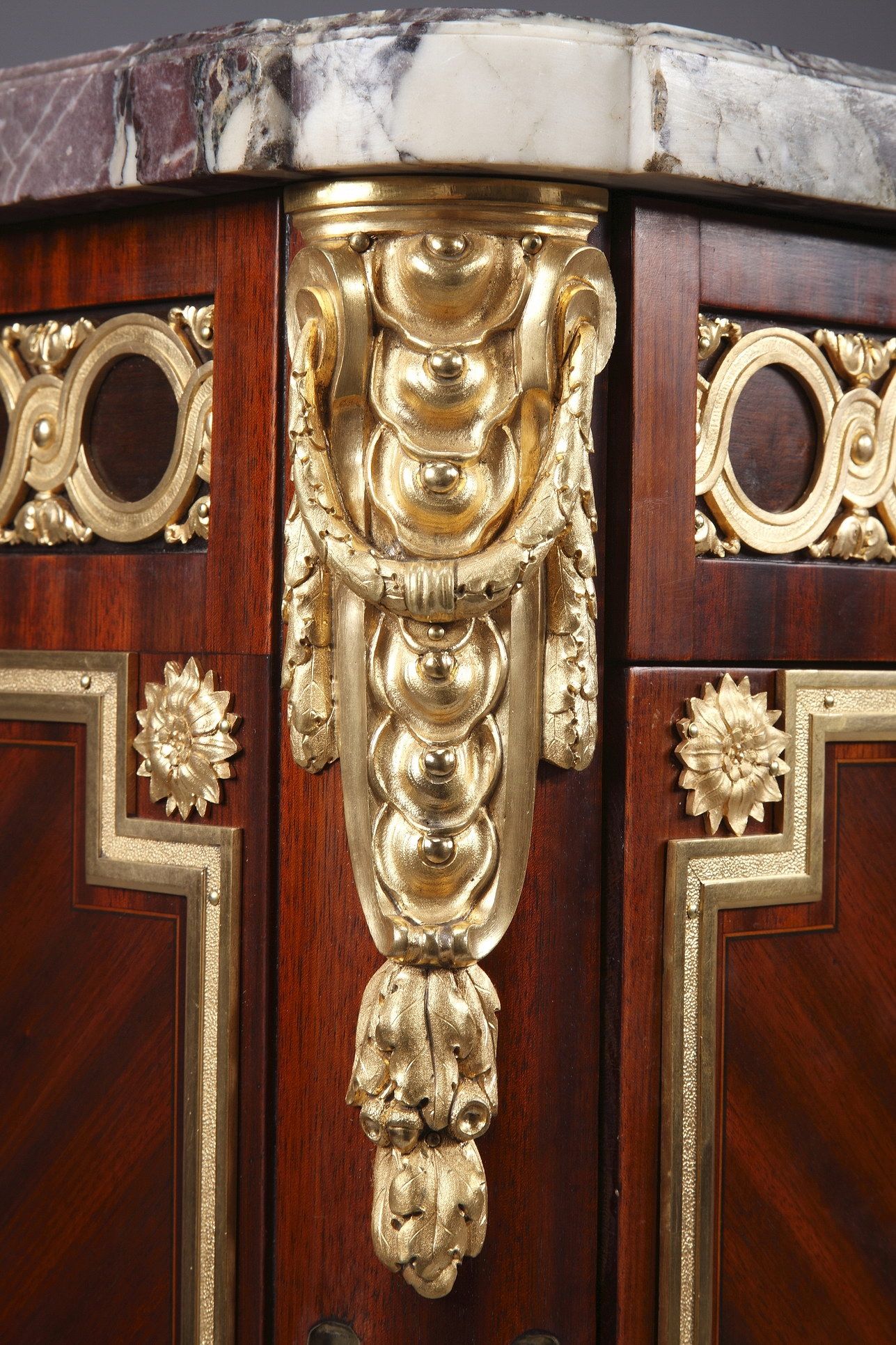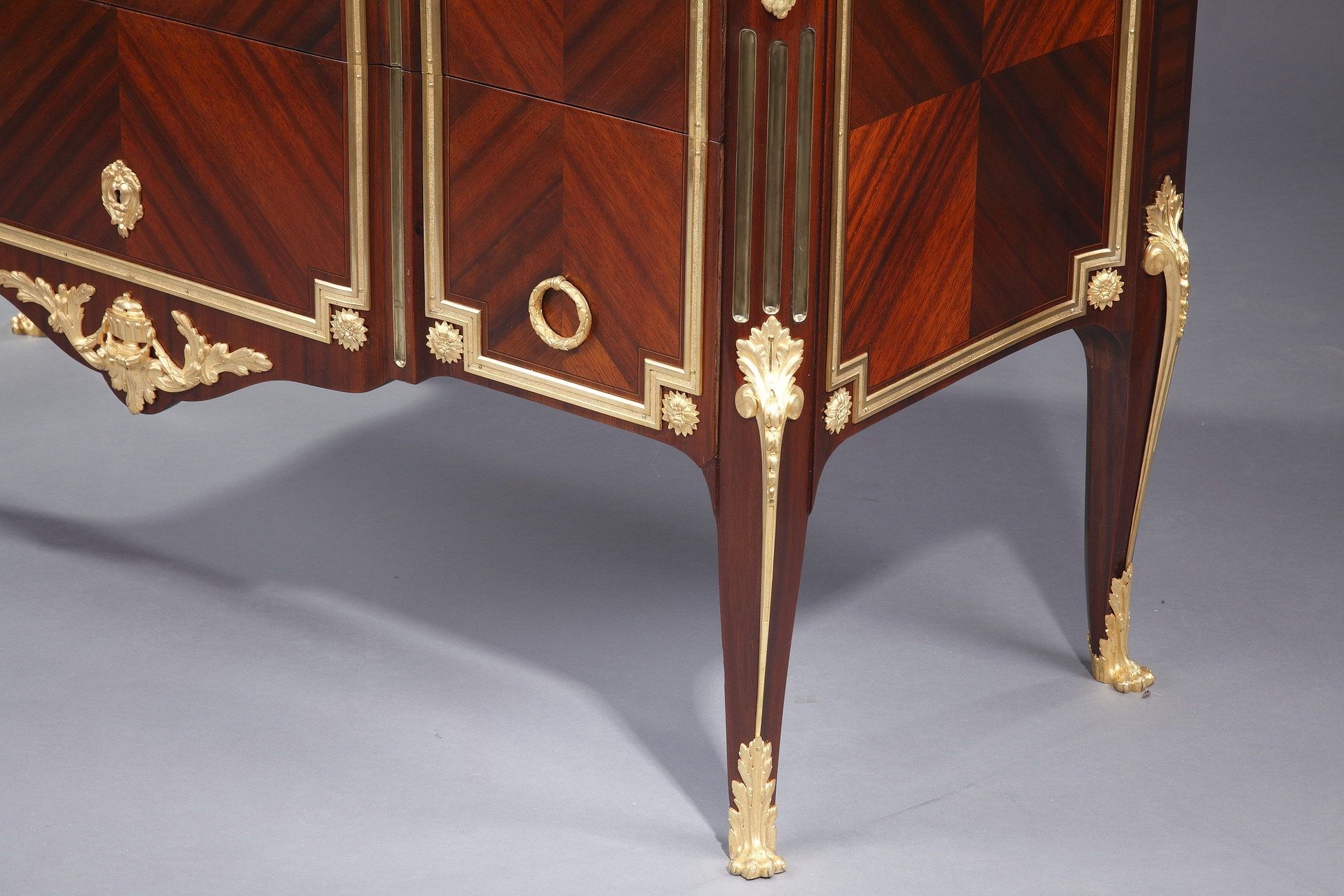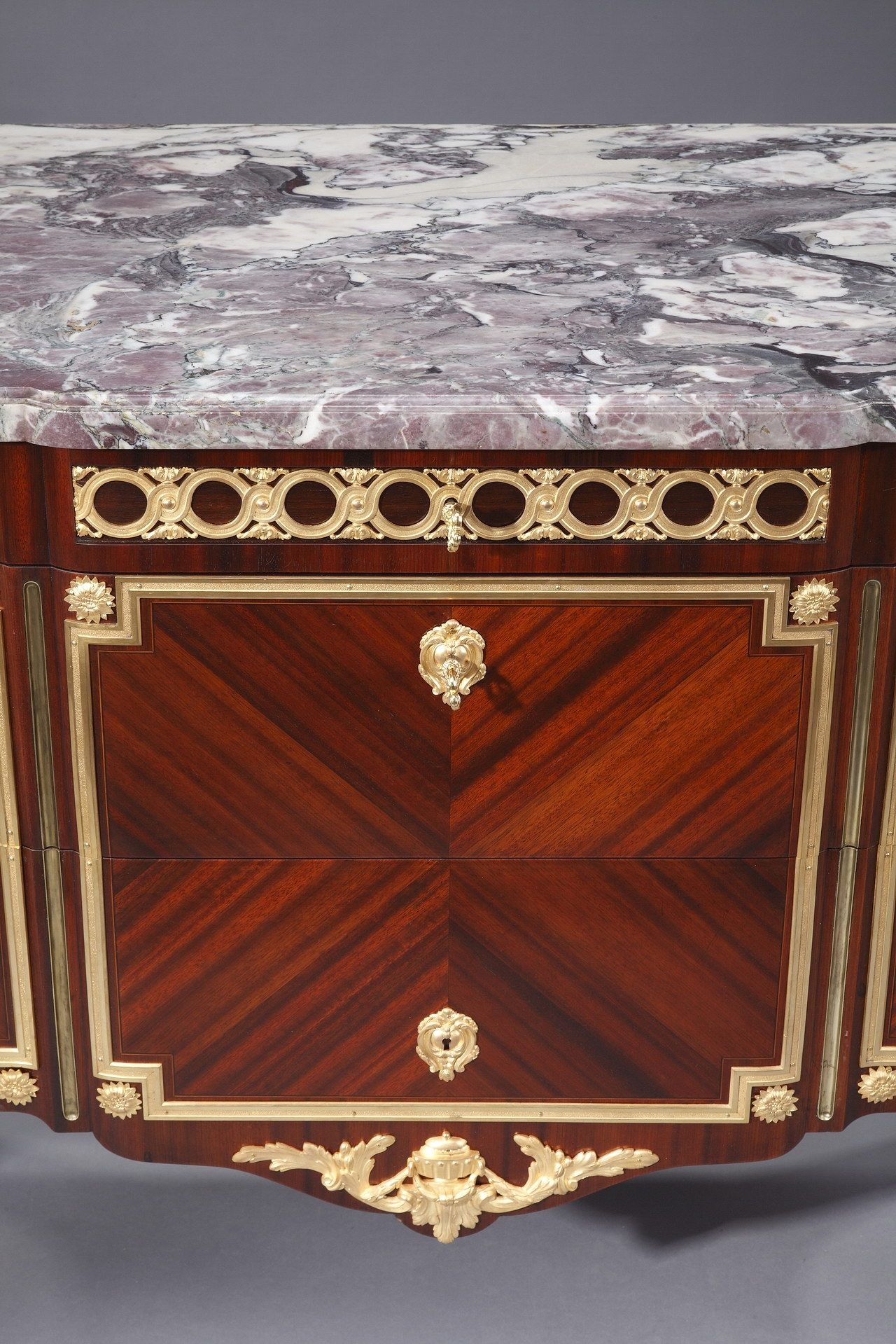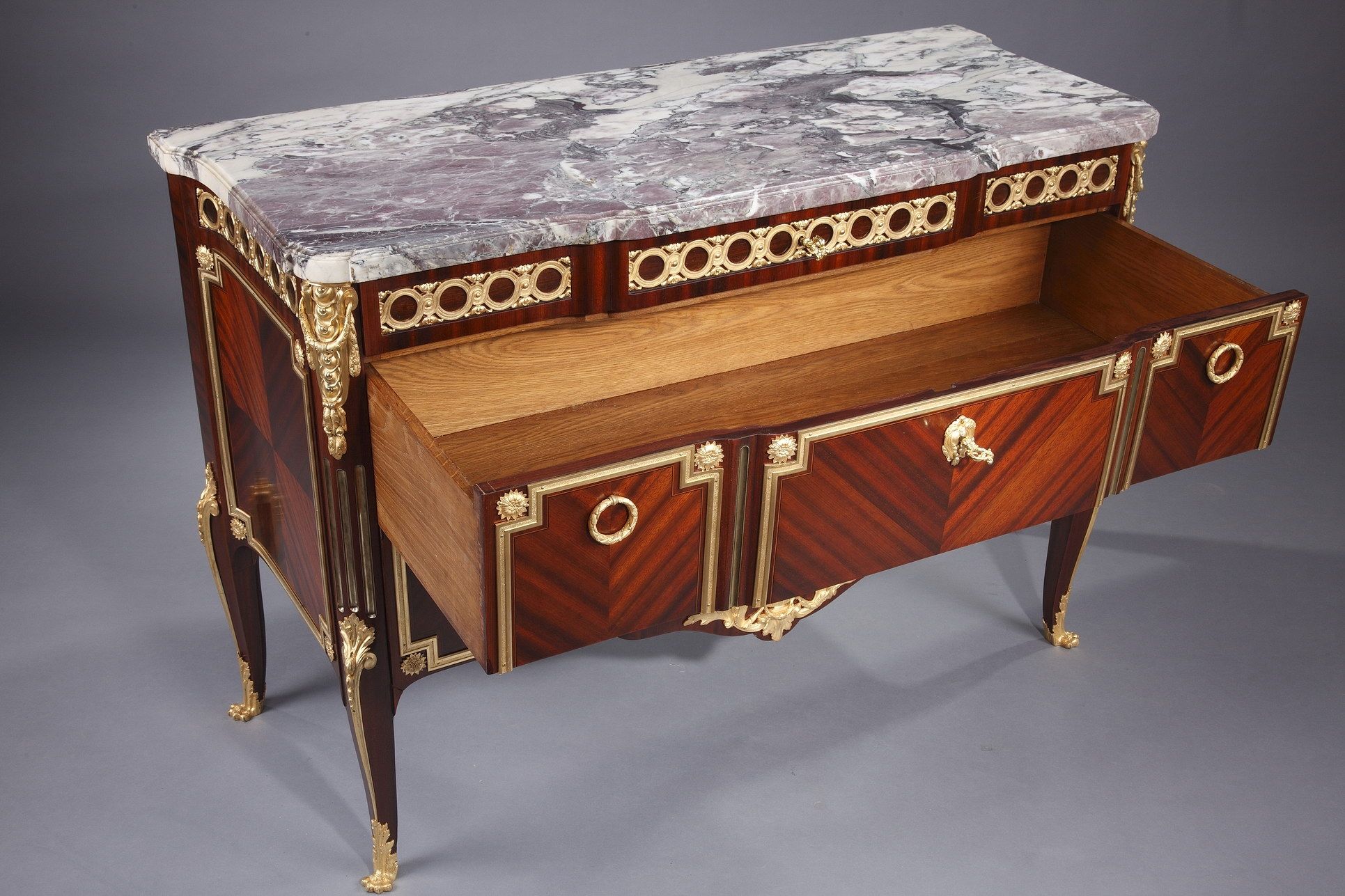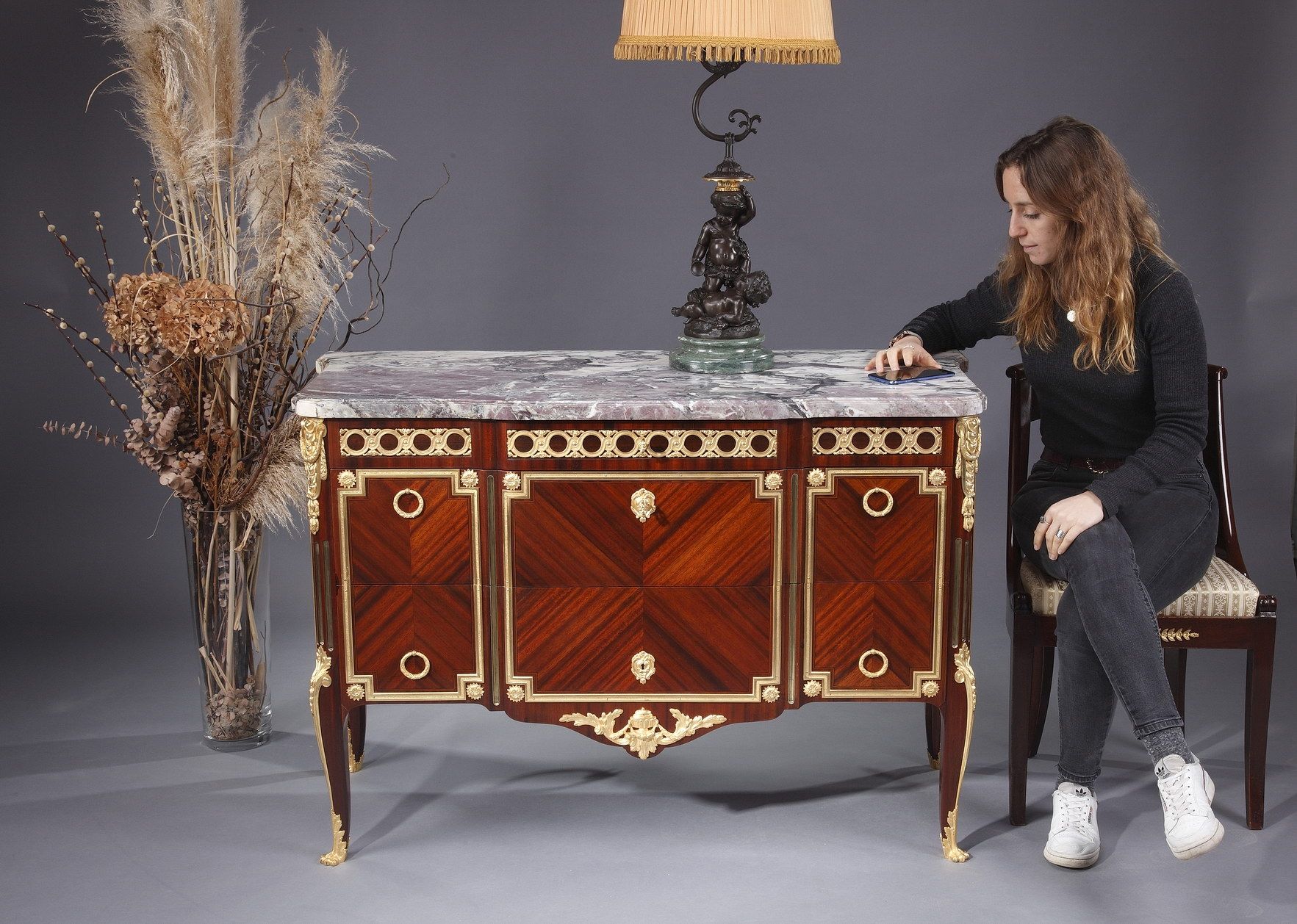Mercier Frères Transition-style chest of drawers
21.01.21
The Transition style: historical landmarks
The Transition style covers the period from 1750 to 1774 and refers to the stylistic evolution that, in the second half of the reign of Louis XV and at the very beginning of the reign of Louis XVI, was characterized by the abandonment of curves and Rocaille extravagance in favor of straight lines, symmetry and harmonious proportions.
The transition from Louis XV to Louis XVI style is gradual. Initially, Louis XV ornaments and forms were juxtaposed with neoclassical ones, inspired by Greek models. Later, under the reign of Louis XVI (1774-1793), only antique-inspired attributes were retained, giving rise to the neoclassical style.
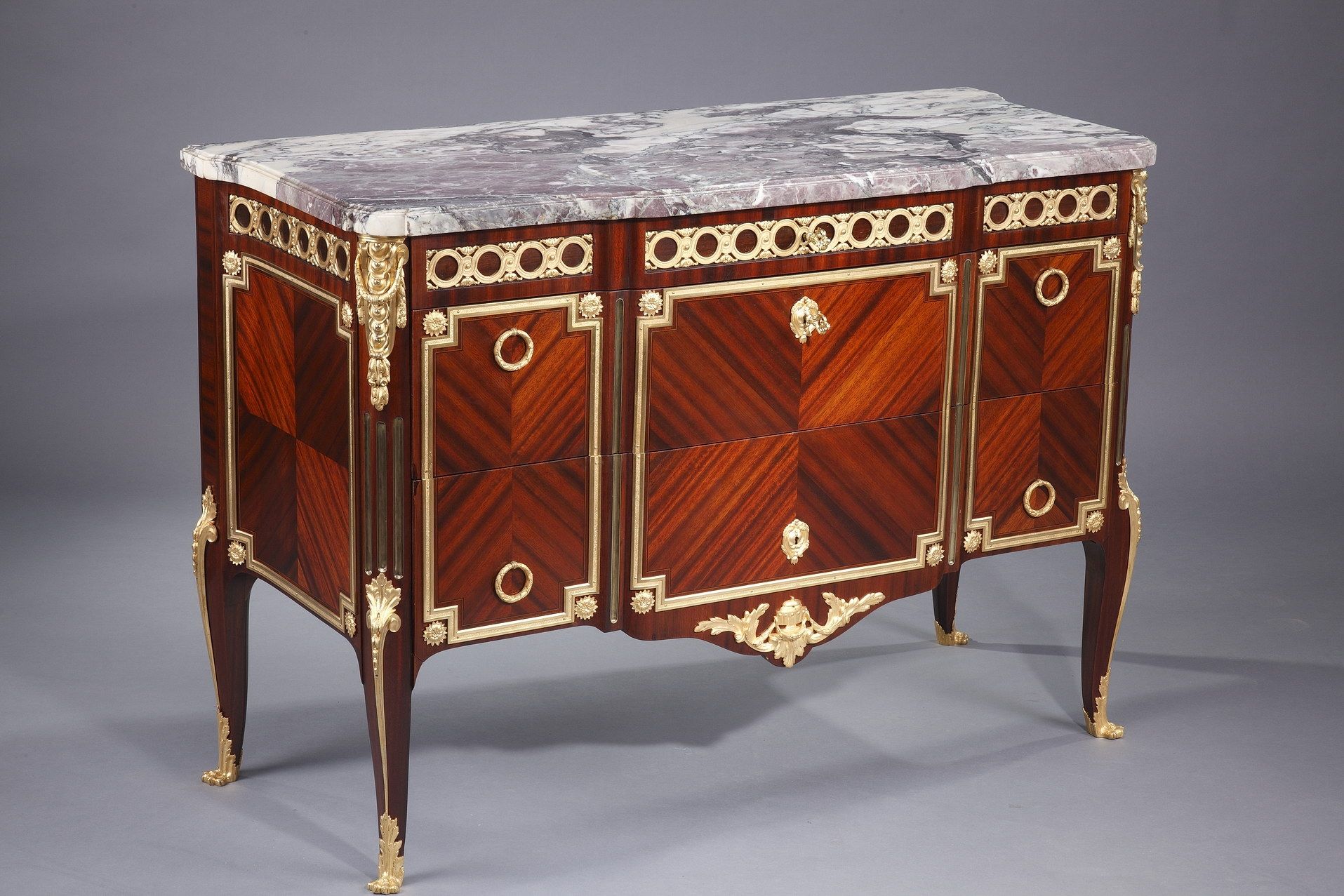 Transition style chest of drawers, three-quarter view
Transition style chest of drawers, three-quarter view
This evolution of taste in the mid-18th century was linked to the vogue for archaeology, sparked by the discoveries of the sites of Herculaneum (1748) and Pompeii (1752). These historical events gave rise to the publication of numerous illustrated works and the distribution of engravings, which described Greco-Roman architectural motifs and orders, democratising this new style known as the "Greek" style.
German scholars in Rome at the time, such as Goethe (1749-1832) and Johann Joachim Winckelman (1717-1768) - archaeologist and art historian, author of Réflexions sur l'imitation des ouvrages grecs dans la sculpture et la peinture (1755) and Histoire de l'art de l'Antiquité (1764) - seized on Antiquity and endeavored to demonstrate, through their writings, the supremacy of the Greek ideal of beauty.
In France, the Encyclopedists attacked the futility of Rocaille art. Denis Diderot condemned the light subjects of François Boucher (1703-1770) and exalted the moral painting of Jean-Baptiste Greuze (1725-1805). Jean-Jacques Rousseau, for his part, questioned the society of his time (Du contrat social, 1762) and advocated a return to nature. Quatrère de Quincy (1755-1849), following Winckelmann's ideas, published an Essay on the Ideal in 1805. In addition, French artists and architects travelled to Italy to study the ancient monuments, remains and objects found intact near Vesuvius.They all agreed and denounced the artificiality of art under the reign of Louis XV and called for a return to order and morality.
Certain personalities who favored a return to Antiquity, such as Madame du Barry, favorite of King Louis XV, helped the Transition style to flourish by commissioning cabinetmakers to create "Greek-style" furniture for her château at Louveciennes.
 Transition style chest of drawers: piastre, interlacing frieze and crown handle
Transition style chest of drawers: piastre, interlacing frieze and crown handle
Furniture, decor and ornamentation in the Transition style
The short "Transition" period was initially characterized by a straightening of the rocaille curves, although they did not disappear completely. A return to the straight lines and symmetry inspired by Antiquity was gradually achieved, before triumphing definitively under Louis XVI. Furniture followed this evolution, bringing flat surfaces and right angles back into fashion. Parallel and perpendicular lines became more and more the norm in decoration. Curved chests of drawers give way to straight fronts, but retain cambered legs with more or less pronounced curves. The frame is composed of two large drawers without rails and a small drawer in the waistband. The rigidity of the lines is softened by cut surfaces, curves and protrusions.
On furniture, the "greek" style is manifested by the ornaments recently found on monuments, mosaics and antique decorations: rosettes, palmettes, garlands, interlacing, pearls, piasters, rais-de-coeur or ribbons with right angles. At the same time, marquetry with geometrical decorations developed with cubes, checkerboards, rhombuses and backgrounds with a grid of florets known as "à la reine" marquetry. These geometrical designs are repeated to emphasise the structure of the furniture.
The fine, elegant molding, less accentuated than under Louis XV, is also inspired by antique moldings.
A whole new ornamental grammar translated into marquetry and gilded bronzes took place on the tables, chests of drawers, bonheurs-du-jour and writing desk of the period. Certain decorative motifs already existed under Louis XIV, but the ornamentalists refined and reworked them to bring them up to date.
Transition style techniques
Marquetry and friezing in the Transition style
The marquetry technique reached its highest degree of perfection in the mid-18th century. Cabinetmakers retained this technique, but adapted it to the neoclassical ornamental repertoire. Exuberant floral marquetry was gradually replaced by more sober designs, or by simple veneering to produce geometric motifs, framed by rectilinear borders.
Gilded bronzes Transition
The bronzes, which were still present, became considerably lighter and were generally supplied by the founders. New antique motifs in the form of rosettes, drapery, ribbons, post, laurel garlands, piastres, falling acanthus leaves and Grecian motifs are applied to the cubic body of the furniture. The fronts are decorated with square or rectangular panels, with an angle and a rose window.
The curved legs are decorated withLouis XV chiselled bronze foliage. These bronzes serve both as a transition and as a reinforcement between the curved base and the straight frame of the furniture. For the chests of drawers, the cambered foot with facets elegantly extends the smooth and angular surface of the uprights.
Stylish furniture in the 19th century
In the second half of the 19th century, eclectic cabinetmakers such as Antoine Krieger (1804-1869) and Mercier Frères (1828-1985) created furniture in the Transition style. Examples include chests of drawers and display cabinets with straight bodies resting on curved legs, such as our chest of drawers by Mercier Frères. These high-quality pieces of furniture were presented at the London and Paris World Fairs, and some were acquired by the Imperial Court of Napoleon III.
These eclectic productions met the demands of a society with a strong attachment to the past. On the occasion of the Universal Exhibition in London in 1851 - where the French art industry was at the forefront - Léon de Laborde (1807-1869) - a French archaeologist and scholar trained in Germany, published a report in which he recommended that French manufacturers revive tradition and, before creating, understand the particular taste of each period.
Cabinetmakers responded to this taste for the past by rediscovering and appropriating the principles and techniques of their predecessors. Some learned to carve Renaissance-style oak or walnut furniture, others specialised in imitating copper and tortoiseshell inlays after André-Charles Boulle, while many houses produced marquetry furniture decorated with finely chiselled gilded bronzes, inspired by 18th-century styles.
The houses under the Second Empire are mostly reconstructions of the past. There were medieval and Renaissance dining rooms, Louis XIV ling rooms, Louis XV powder rooms and Louis XVI bedrooms. TheEmpress Eugenie contributed greatly to the rediscovery of the styles of the Ancien Régime, particularly the Louis XVI style.
Restoring the chest of drawers: a patient process
In order to restore this beautiful chest of drawers to its original state, we have restored it according to the good practicein our workshop.
Our team of restorers first dismantled the bronze pieces in order to clean them and restore their shine.
Then, after finely sanding the marquetry, they revived it to highlight its original veins and colours. They then used the technique of pad varnishing, which consists of applying a pocket to the wood, in which a cotton wick soaked in varnish is placed, describing successive "8s" in a regular gesture.
The top in Marble has been sanded to even out the surface and remove any signs of wear and tear and irregularities. Finally, the Marble was polished to restore its shine and brilliance.
The restoration of this chest of drawers has been a long and patient process, enabling us to restore this beautiful Transitional chest of drawers to its full splendor and elegance.


